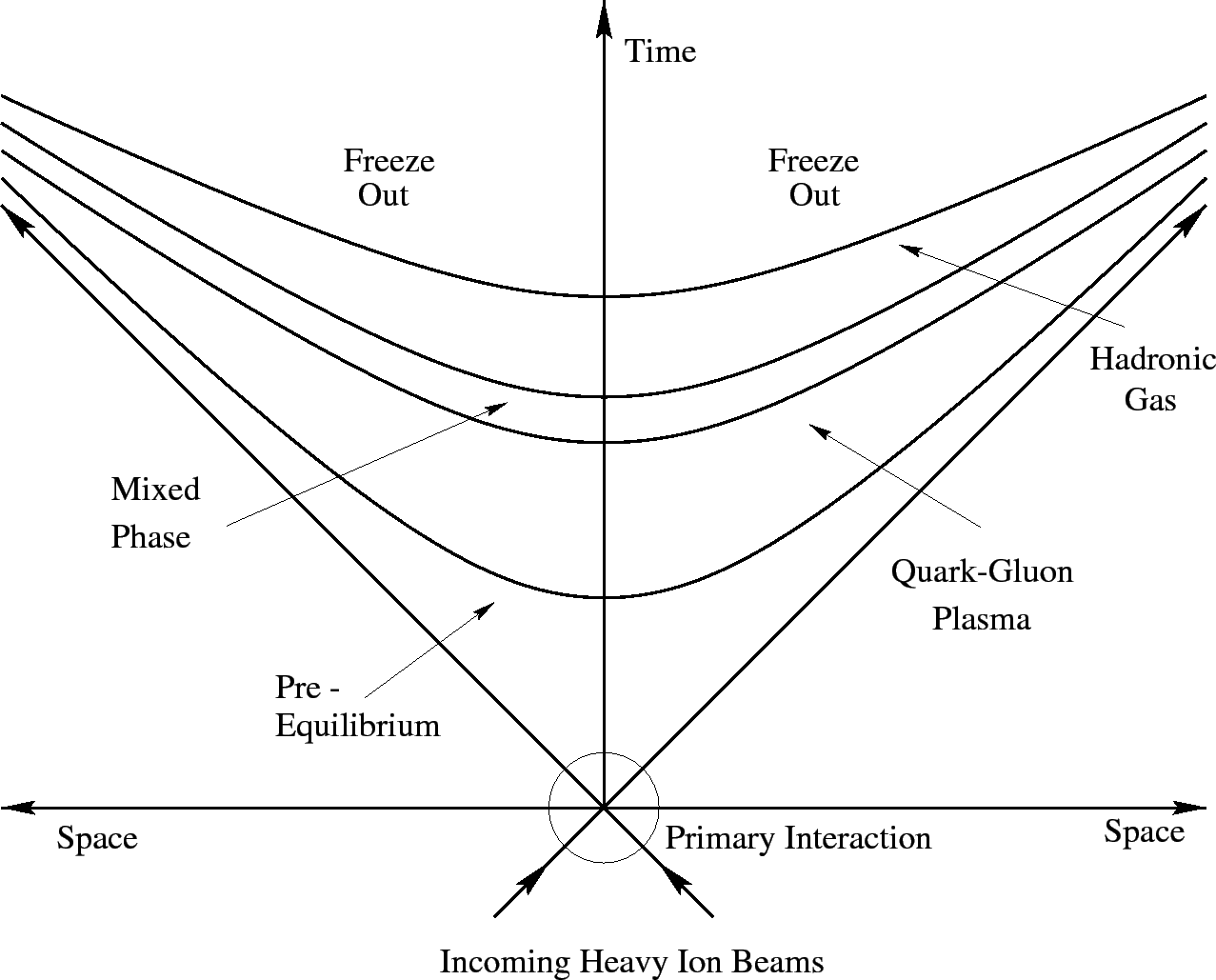Next: Strangeness production in a Up: Introduction Previous: Physics Programme for Data Contents
 |
The process is started when heavy-ion beams collide and a fireball
is created. During an initial stage, many quarks and gluons are created
in the collision volume in inelastic collisions. At the pre-equilibrium
stage, these ``secondary'' partons interact with themselves. With the
increase of parton density, ![]() pairs are created more easily
due to the high temperature (Debye-screening process). When this
partonic matter reaches equilibrium, it is called Quark-Gluon Plasma.
At some point the fireball expands due to the internal pressure.
It cools down and the system crosses the phase boundary, partons start
to hadronize. At the end, the system expands until it is cool enough so
that elastic collisions between particles can no longer occur and the
particles' momenta are fixed.
pairs are created more easily
due to the high temperature (Debye-screening process). When this
partonic matter reaches equilibrium, it is called Quark-Gluon Plasma.
At some point the fireball expands due to the internal pressure.
It cools down and the system crosses the phase boundary, partons start
to hadronize. At the end, the system expands until it is cool enough so
that elastic collisions between particles can no longer occur and the
particles' momenta are fixed.
As the deconfined phase is very short lived, it is impossible to detect it directly. Therefore, in order to conclude whether the phase transition occurred, the measurement of a quantity which is specific for the QGP phase is required.
The use of global observables, such as energy density as a function of temperature has a problem. A calculation of the energy density is model dependent and if the phase transition is continuous more than first order, the energy density will increase linearly with increasing temperature in the transition area. In order to avoid such a problem, other observables are used to search for a deconfined state of matter. It is predicted, that the phase transition can be seen experimentally in the following effects:
Yury Gorbunov 2010-10-21